Unlocking Income and Growth: A Comprehensive Guide to Dividend ETFs (VIG vs. SCHD and Beyond)
Are you looking to build a resilient investment portfolio that offers both potential capital growth and a steady stream of income? In an investment landscape increasingly shaped by fluctuating interest rates and persistent inflation, the quest for reliable returns has become more critical than ever. Exchange-Traded Funds (ETFs) provide an accessible and diversified pathway to achieving these goals, particularly dividend-focused ETFs. This article will guide you through the intricate world of dividend investing, differentiating between dividend growth and high-yield strategies, spotlighting prominent ETFs like VIG and SCHD, and offering insights into constructing a balanced, income-generating portfolio that can withstand various market conditions. 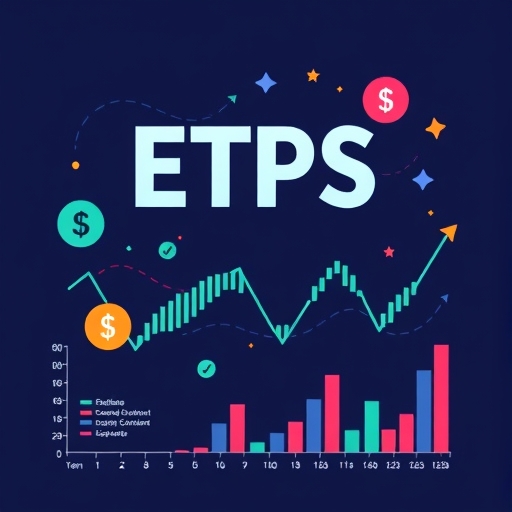
To better understand the various investment vehicles available, it’s helpful to consider their primary objectives and characteristics. This simple overview highlights how different investment types cater to varying financial goals.
| Investment Type | Primary Objective | Key Characteristic | Typical Risk Level |
|---|---|---|---|
| Growth Stocks/ETFs | Capital Appreciation | Reinvests profits into the company | Moderate to High |
| Dividend Stocks/ETFs | Income Generation, Capital Appreciation | Distributes a portion of profits to shareholders | Low to Moderate |
| Bonds/Fixed Income | Capital Preservation, Steady Income | Lends money for fixed interest payments | Low |
| Real Estate | Capital Appreciation, Rental Income | Tangible asset ownership, potential for leverage | Moderate |
Dividend ETFs offer several compelling advantages for investors aiming for long-term financial security and a steady income stream. These benefits include:
- Diversification: Investing in an ETF provides instant diversification across many companies, sectors, and industries, reducing single-stock risk.
- Cost-Efficiency: ETFs typically have lower expense ratios compared to actively managed mutual funds, preserving more of your returns.
- Liquidity: Unlike some alternative investments, ETFs can be bought and sold throughout the trading day, similar to individual stocks.
The Core Choice: Dividend Growth vs. High-Yield Strategies
When we talk about investing in companies that share their profits with shareholders, we’re generally discussing two main approaches: dividend growth investing and high-yield dividend investing. Understanding the difference is crucial for aligning your investments with your financial goals. Dividend ETFs, investment securities that trade like stocks, are designed to track a wide range of investments or indices, offering immediate diversification. While some ETFs focus on capital appreciation (often called Growth ETFs), others, known as Dividend ETFs, prioritize consistent returns through regular payouts. 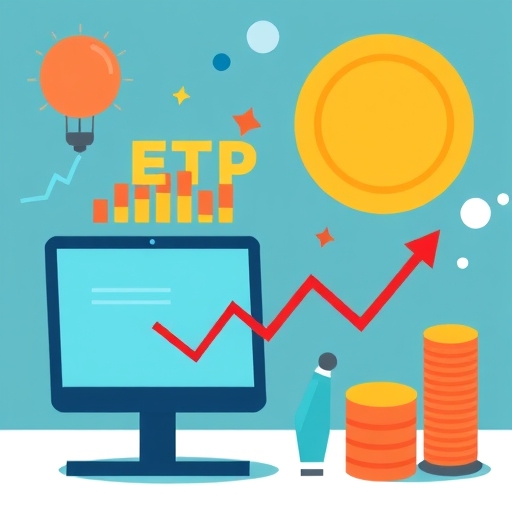
So, what’s the fundamental difference between seeking growth and seeking income? Let’s break down the pros and cons:
- Growth Investing Pros: Companies focused on growth often reinvest their profits back into the business, aiming for rapid expansion. This approach can lead to exceptional growth potential and attracts top talent. For instance, tech giants like NVIDIA, Alphabet (GOOG), and Amazon (AMZN) are prime examples, prioritizing innovation over immediate dividend payouts. The price appreciation in brokerage accounts can also be more tax-efficient since taxes are only paid when shares are sold.
- Growth Investing Cons: This strategy often comes with higher risk, as many newer companies have limited track records. Also, without passive income, you’d need to sell assets to realize profits, which might not be ideal for those seeking a regular cash flow.
Now, let’s consider the other side of the coin:
- Dividend Investing Pros: This strategy provides a steadfast income stream, which can be particularly reassuring during market turmoil. It can also offer a clear path to financial independence. Companies that consistently pay and increase dividends are often high-caliber firms with strong financials, expanding sales, earnings, and free cash flow. Beyond the income, there’s also potential for stock price appreciation. Dividends can act as a volatility buffer and an income anchor for your portfolio.
- Dividend Investing Cons: One key consideration is that dividends are taxable in regular brokerage accounts, potentially reducing your net return. Furthermore, while high yields might seem attractive, they can sometimes be unsustainable and mask underlying risks within a company. It’s easy to misunderstand that returns from non-dividend stocks (through capital gains) can sometimes outperform high-yield dividend stocks over the long run, especially if those high yields lead to less reinvestment in the company’s own growth.
Dividend investing strategies can offer significant benefits across various market conditions, providing both stability and growth potential. Here’s how dividend-focused investments can perform in different economic environments:
| Market Condition | Benefit of Dividend Investing | Explanation |
|---|---|---|
| Bull Market (Rising) | Capital Appreciation & Growing Income | Companies thrive, stock prices rise, and many increase dividends, offering a dual benefit. |
| Bear Market (Falling) | Income Stability & Reduced Volatility | Dividends provide a steady income stream even if stock prices decline, acting as a buffer. |
| High Inflation | Inflation Hedge (Dividend Growth) | Companies with growing dividends can increase payouts faster than inflation, preserving purchasing power. |
| Low Interest Rates | Attractive Yield Alternative | When bond yields are low, dividend stocks offer a more compelling income opportunity. |
| High Interest Rates | Resilient Performance (Quality Growers) | Strong dividend growers often have robust financials, allowing them to weather higher borrowing costs. |
Within dividend ETFs, we can further categorize them. Some are high dividend yield ETFs, focusing on companies currently offering the highest payouts. Others are backward-looking dividend ETFs, tracking companies with a long history of increasing dividends, like the “Dividend Aristocrats” (25+ consecutive years of increases). Finally, forward-looking dividend growth ETFs try to identify companies poised to increase their dividends in the future. Each type caters to a different investment philosophy, and understanding these distinctions is your first step toward building a robust dividend portfolio.
When selecting a dividend ETF, it’s important to consider several key factors that align with your personal investment goals and risk tolerance. These considerations can help you make an informed decision:
- Investment Objective: Determine if you prioritize high current income, consistent dividend growth, or a balance of both.
- Expense Ratio: Look for ETFs with low expense ratios to maximize your net returns over the long term.
- Underlying Index Methodology: Understand how the ETF selects its holdings, including criteria for dividend history, yield, and financial health.
- Sector and Geographic Diversification: Ensure the ETF provides adequate diversification across different industries and regions to minimize concentration risk.
- Dividend Payout Frequency and Consistency: Check the historical record of dividend payments to assess reliability and growth.
VIG vs. SCHD: A Deep Dive into Two Dividend Powerhouses
When investors begin exploring dividend growth ETFs, two names frequently come up: the Vanguard Dividend Appreciation ETF (VIG) and the Schwab US Dividend Equity ETF (SCHD). Both are highly popular, but they track different indices and cater to slightly different investor preferences. Let’s delve into a detailed comparison to help you understand which one might be a better fit for your investment goals. 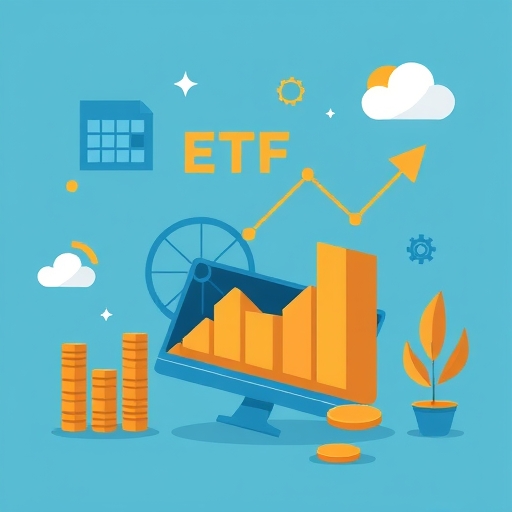
VIG aims to track the S&P US Dividend Growers Index. This index is composed of U.S. stocks that have a remarkable history of increasing their dividends for at least 10 consecutive years. The focus here is on companies demonstrating financial stability and strong cash flows, which are essential for sustainable dividend growth. VIG explicitly excludes the top 25% highest-yielding eligible companies, a strategy designed to avoid “dividend traps” – companies offering unsustainably high yields that might be at risk of cutting their payouts.
On the other hand, SCHD tracks the Dow Jones US Dividend 100 Index. This index selects 100 high-quality U.S. stocks based on a combination of factors: their dividend yield, dividend growth rates, and the sustainability of their dividends. SCHD’s methodology tends to favor companies that offer a stronger current yield while still demonstrating a commitment to dividend increases. It’s a blend that seeks to capture both immediate income and future growth potential from financially sound businesses.
Let’s look at some key comparative metrics:
| Feature | Vanguard Dividend Appreciation ETF (VIG) | Schwab US Dividend Equity ETF (SCHD) |
|---|---|---|
| Underlying Index | S&P US Dividend Growers Index | Dow Jones US Dividend 100 Index |
| Dividend Growth Requirement | 10+ consecutive years of increases | Selected for yield, growth, and sustainability (no fixed minimum, but growth is a factor) |
| Assets Under Management (AUM) | ~$65 billion | ~$45.5 billion |
| Expense Ratio | 0.06% | 0.06% |
| 30-Day SEC Yield | ~1.97% | ~3.91% |
| Short-Term Performance | Typically outperforms SCHD | May lag VIG |
| Long-Term Performance | Solid, but often outpaced by SCHD | Shows stronger long-term performance |
| Investor Profile | Conservative investors seeking dividend growth and stable returns, especially in negative markets. | Income seekers prioritizing higher yields and potential for higher long-term returns, accepting added short-term risk. |
As you can see, both VIG and SCHD boast incredibly low expense ratios, making them cost-effective choices for long-term investors. However, their yield profiles differ significantly. SCHD offers a notably higher 30-day SEC yield, appealing more to investors who prioritize a larger immediate income stream. VIG, by focusing on consistent growers and excluding the highest yielders, tends to have a lower current yield but emphasizes the stability and growth potential of its underlying companies.
In terms of performance, VIG has historically shown a tendency to outperform SCHD in the short term, often due to its more conservative approach and emphasis on stability. However, SCHD has demonstrated stronger long-term performance, likely benefiting from its balanced approach to yield and growth. Your choice between VIG and SCHD ultimately depends on your primary investment objective. Do you prioritize a higher current income and potentially greater long-term returns, accepting a bit more short-term volatility? Or do you prefer a more conservative approach focused purely on consistent dividend growth and stability, even if it means a lower starting yield?
Macroeconomic Currents: Inflation, Interest Rates, and Dividend Resilience
The broader economic environment, particularly inflation and interest rates, significantly influences the effectiveness and appeal of different dividend strategies. Understanding these macroeconomic factors is crucial for making informed investment decisions. We’ve seen periods of “nasty inflation surprises,” with the Consumer Price Index (CPI) reaching as high as 7% in 2021 and 6.5% in 2022. This kind of inflation significantly erodes the purchasing power of your money, making it vital to choose investments that can help you maintain or even grow your real wealth.
This is where dividend growth stocks truly shine. Companies that consistently increase their dividend payouts over time can help mitigate the effects of inflation by providing you with an increasing income stream. Imagine if your income stayed flat while the cost of living soared – that’s the risk inflation poses to fixed-income investments. Dividend growth strategies, such as those that track the S&P 500 Dividend Aristocrats Index (companies that have grown their dividends for at least 25 consecutive years), have demonstrated remarkable resilience and strong performance across various interest rate environments, whether rates are rising or falling. This adaptability is a key characteristic that makes them a valuable component of a long-term portfolio.
Historically, dividends have played a much larger role in total market returns than many realize. Since 1960, dividends have accounted for roughly one-third of the market’s total return. Looking further back, between 1930 and 2022, dividends and their reinvestment contributed over 40% to the S&P 500’s annualized total return. This underscores their importance, not just as an income source, but as a significant driver of overall wealth accumulation.
But how do dividend growth companies compare to high-dividend-yield companies during challenging economic times? During periods of economic difficulty, such as the Great Financial Crisis, high-dividend-yielding companies are often more prone to reducing or even cutting their dividends. This happens because these companies might be paying out a larger portion of their earnings as dividends, leaving less capital for reinvestment or to weather economic downturns. In contrast, consistent dividend growers, often characterized by strong financials and conservative payout ratios, have a track record of maintaining and even increasing their payouts through various difficult environments. This consistency leads to a higher “yield-on-cost” over time – meaning that your initial investment generates a much higher percentage yield on its original cost as the dividends increase year after year, often surpassing the initial yield of high-dividend strategies.
The Federal Reserve’s monetary policy normalization, including interest rate hikes, has created volatility in the markets. While this can challenge many investors, dividend growth strategies have shown their mettle. They offer a more balanced approach to returns, combining steady income with capital appreciation potential, making them a robust choice for navigating uncertain economic currents. So, when considering your investment choices, always ponder: how will this investment perform when inflation is high, or when interest rates are on the move? Dividend growth stocks provide a compelling answer.
Beyond the Giants: Exploring a Spectrum of Dividend Growth ETFs
While VIG and SCHD are excellent starting points, the world of dividend growth ETFs is much broader. Exploring other options allows you to fine-tune your portfolio to specific preferences, whether it’s focusing on ultra-consistent dividend payers, small-cap growth, or a blend of factors. Let’s look at some other significant players in the dividend ETF space: 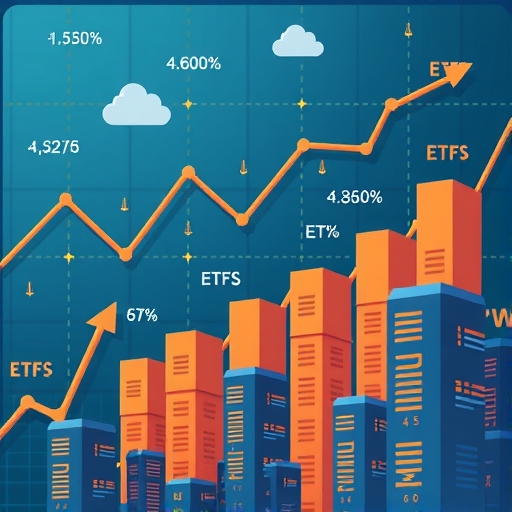
- ProShares S&P 500 Dividend Aristocrats ETF (NOBL):
- What it tracks: The S&P 500 Dividend Aristocrats Index.
- Key Criteria: This ETF specifically targets companies within the S&P 500 that have increased their dividends for an impressive 25 or more consecutive years. This is a very high bar, indicating exceptional financial stability and commitment to shareholders.
- Unique Feature: NOBL is equally weighted, meaning each company has roughly the same influence on the ETF’s performance, preventing any single stock from dominating. It also limits any one sector to no more than 30% of holdings, ensuring broad diversification.
- Expense Ratio: 0.35%. While higher than VIG or SCHD, it reflects the specialized nature of its holdings.
- Who it’s for: Investors seeking the most consistent, long-term dividend growers with a highly diversified, equally weighted approach.
- iShares Core Dividend Growth ETF (DGRO):
- What it tracks: The Morningstar U.S. Dividend Growth Index.
- Key Criteria: Focuses on companies with at least five years of uninterrupted annual dividend growth and a sustainable earnings payout ratio of less than 75%. It also excludes stocks in the top decile by dividend yield to avoid potential “yield traps.”
- Expense Ratio: 0.08%.
- Who it’s for: Investors looking for a broader universe of dividend growers than VIG or NOBL, with an emphasis on payout sustainability and a low expense ratio.
- Siren DIVCON Leaders Dividend ETF (LEAD):
- What it tracks: The Siren DIVCON Leaders Dividend Index.
- Key Criteria: This ETF uses a proprietary “DIVCON system” that evaluates seven quantitative factors across the 500 largest U.S. companies. It identifies “DIVCON 5” rated stocks, which are those most likely to raise their payouts over the next 12 months, or the 30 stocks with the highest DIVCON scores. It’s a forward-looking, predictive approach.
- Unique Feature: With relatively small assets under management (AUM) of around $57 million and extremely thin trading volume, it’s advised to use limit orders when trading to avoid unfavorable prices.
- Expense Ratio: 0.43%.
- Who it’s for: More adventurous investors interested in a predictive model for future dividend increases, acknowledging higher risk due to lower liquidity.
- SPDR S&P Dividend ETF (SDY):
- What it tracks: The S&P High Yield Dividend Aristocrats Index.
- Key Criteria: Includes S&P Composite 1500 companies that have consistently increased their dividend for at least 20 consecutive years.
- Unique Feature: Constituents are weighted by their annual dividend yield, with a maximum weight of 4%. Its portfolio has a heavier allocation to mid-cap stocks (48%) and small-cap stocks (15%) compared to many large-cap focused dividend ETFs.
- Expense Ratio: 0.35%.
- Who it’s for: Investors seeking exposure to long-standing dividend growers across different market capitalizations, with a tilt towards higher current yield among these reliable payers.
- ProShares Russell 2000 Dividend Growers ETF (SMDV):
- What it tracks: The Russell 2000 Dividend Growth Index.
- Key Criteria: Focuses on small-cap companies within the Russell 2000 Index that have improved their annual dividend payouts every year for at least a decade. It is required to hold at least 40 stocks.
- Unique Feature: Offers exposure to dividend growth within the small-cap segment, which is often overlooked but can provide unique growth opportunities.
- Expense Ratio: 0.40%.
- Who it’s for: Investors looking to diversify their dividend exposure into the small-cap market, believing in the growth potential of smaller, dividend-growing companies.
Each of these ETFs offers a distinct flavor of dividend investing, allowing you to tailor your portfolio to your specific risk tolerance, income needs, and growth aspirations. By understanding their unique methodologies and underlying holdings, you can build a more diversified and robust dividend income stream.
Crafting Your Portfolio: Balancing Growth and Consistent Income
Building a successful investment portfolio isn’t just about picking individual stocks or even individual ETFs; it’s about creating a balanced ecosystem that can thrive in various market conditions. Diversified investing using ETFs is a powerful strategy to hedge risk, especially during market fluctuations. A truly resilient portfolio often combines both growth and dividend investments, leveraging the best of both worlds: capital appreciation from growth stocks and a steady income stream from dividend payers.
Consider a balanced approach. You might allocate a portion of your portfolio to innovative growth companies or ETFs. For instance, an innovation powerhouse like Microsoft (MSFT), with its unwavering consumer loyalty and strong financial position, promises substantial capital gains, even if its direct dividend yield is modest. For broader growth exposure, ETFs like Invesco NASDAQ 100 ETF (QQQM), Schwab US Large-Cap Growth ETF (SCHG), or Vanguard Growth ETF (VUG) offer diversified access to companies prioritizing expansion and technological advancement. These can act as a hedge against sector-specific risks while capturing overall market momentum.
Alongside these growth drivers, integrate robust dividend investments. Beyond VIG and SCHD, consider individual dividend-growing stocks like Visa (V), which boasts a modest yield but a strong 16%+ yearly dividend growth rate fueled by its dominance in digital transactions. Or, as discussed, SCHD itself, with its 3.91% yield and an impressive 11-12% average annual dividend hike, backed by a diversified portfolio of 100+ high-quality companies, provides a compelling blend of income and growth.
It’s crucial to “look under the hood” of any ETF you consider. Don’t just rely on its name or Morningstar category. We recommend digging into its underlying sector exposures and capitalization weights, as these significantly impact performance. For example, while technology companies like the “Magnificent 7” (Apple, Microsoft, Alphabet, Amazon, NVIDIA, Tesla, Meta Platforms) have powered large-cap stocks to outperform small and mid-cap stocks recently, many are excluded from long-standing dividend growth indices. Why? Because these tech giants often prioritize reinvesting profits for growth rather than dedicating capital to consistent, high dividend payouts over decades. This means that dividend ETFs with higher technology allocations, such as iShares S&P 500 Value ETF (IVE) or DGRO, might perform differently than those with lower tech exposure.
Ultimately, your portfolio should be a reflection of your individual financial goals and risk tolerance. Are you saving for retirement decades away, or are you nearing financial independence and seeking to supplement your income? By thoughtfully combining growth opportunities with the reliable income streams from well-chosen dividend ETFs and stocks, you can construct a robust, diversified portfolio designed for long-term success and resilience, no matter what economic currents may come your way.
Diversification is a cornerstone of effective portfolio management. By combining different asset classes and investment strategies, you can mitigate risk and potentially enhance returns. Here’s a look at how different components can contribute to a well-rounded portfolio.
| Portfolio Component | Role in Portfolio | Example ETFs | Primary Benefit |
|---|---|---|---|
| Large-Cap Growth | Capital Appreciation | VUG, SCHG, QQQM | High growth potential from established innovators |
| Dividend Growth | Income & Stability | VIG, SCHD, DGRO | Growing income stream, lower volatility |
| International Stocks | Global Diversification | VXUS, IEFA | Exposure to global economic growth |
| Bonds/Fixed Income | Stability & Income | BND, AGG | Capital preservation, counterbalance to stocks |
For long-term investors, several key considerations should guide portfolio construction to ensure resilience and sustained growth. Focusing on these aspects can help in navigating various market cycles successfully:
- Regular Rebalancing: Periodically adjust your portfolio to maintain your desired asset allocation and risk profile.
- Tax Efficiency: Utilize tax-advantaged accounts (e.g., 401k, IRA) for dividend-paying investments to minimize tax drag.
- Continuous Education: Stay informed about market trends and economic factors that could impact your investments.
Conclusion
Navigating the complex world of investment options, especially when seeking both growth and income, requires a clear understanding of your choices. We’ve explored the fundamental differences between dividend growth and high-yield strategies, highlighted by the popular VIG and SCHD ETFs, and discussed how macroeconomic factors like inflation and interest rates shape their performance. Furthermore, we’ve broadened our view to include a spectrum of other dividend growth ETFs, each offering unique characteristics to fit diverse investor needs.
The core message remains clear: while high-yield investments might offer immediate gratification, the consistent increases of dividend growth strategies often provide superior long-term returns and crucial protection against economic headwinds such as inflation. By meticulously understanding the characteristics of various dividend ETFs and intelligently balancing them with growth opportunities, you can construct a robust portfolio designed not just for resilience, but for sustained financial independence. Remember, a diversified approach that considers both capital appreciation and a stable income stream is often the most prudent path to achieving your long-term financial objectives.
Disclaimer: This article is for informational and educational purposes only and should not be considered as financial advice. Investing in ETFs or any securities involves risks, including the potential loss of principal. Always consult with a qualified financial advisor before making any investment decisions.
Frequently Asked Questions (FAQ)
Q: What is the main difference between VIG and SCHD?
A: VIG focuses on companies with 10+ consecutive years of dividend increases, often excluding the highest yielders to avoid “dividend traps,” aiming for growth and stability. SCHD tracks the Dow Jones US Dividend 100 Index, selecting 100 high-quality stocks based on dividend yield, growth rates, and sustainability, often resulting in a higher current yield.
Q: How do dividend growth ETFs help against inflation?
A: Dividend growth ETFs invest in companies that consistently increase their dividend payouts over time. This increasing income stream helps to maintain or grow your real purchasing power, offsetting the erosive effects of inflation on your wealth, especially when dividend increases outpace the inflation rate.
Q: Is it better to invest in growth stocks or dividend stocks?
A: The optimal approach often involves a balanced portfolio combining both. Growth stocks offer potential for significant capital appreciation, while dividend stocks provide a steady income stream and can act as a buffer during market downturns. The best strategy depends on your individual financial goals, time horizon, and personal risk tolerance.


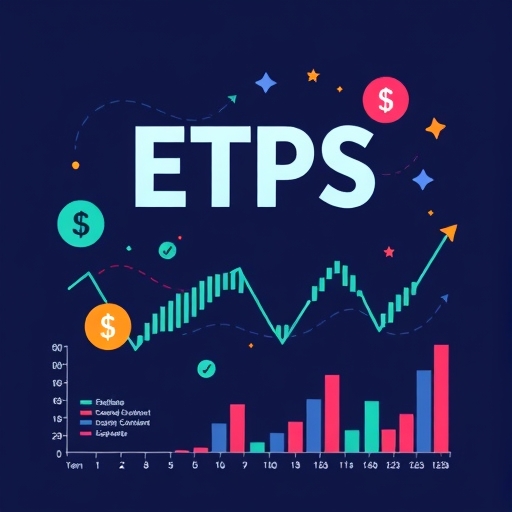
No responses yet